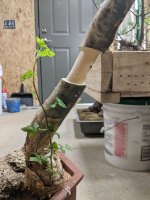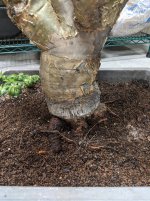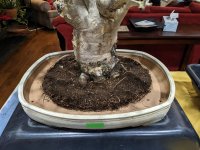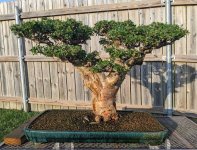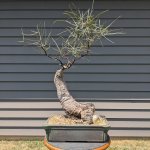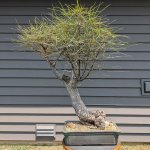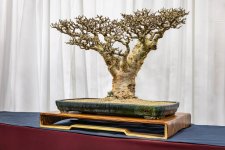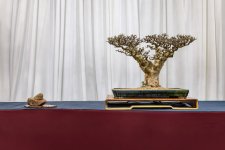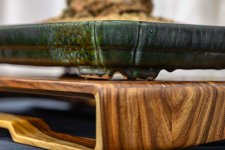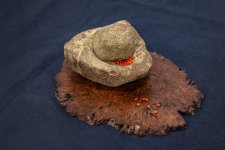@JoeWilson, your observations of the inverse taper and weak Nebari on Bursera fagaroides and Operculicarya decaryi is correct. This is a multifactorial issue and not necessarily a fault of the species in question. Most growers of these species are succulent & cactus collectors, which means they typically are not selecting seedlings and genetics for the same reasons that you and I are. Most of the succulent & cactus community are interested in how rare or unique the genetics are, rather than what we Bonsai collectors are interested in (small foliage, good taper, flaring nebari, aged bark, ramification, etc.). This is not a value judgement by any means, but it helps understand why major structural issues (by Bonsai standards) go unaddressed with most trees that fall into the pachyform or caudiciform camps. There are almost no growers of caudiciforms or pachyforms that approach their cultivation from a Bonsai-centric standpoint (especially early in development).
With all of that out of the way, there are several ways to skin this cat.
1.) Select trees early (seedling age) and only work with ones that display no inverse taper and flat root structures. Then build a quality specimen from that material over the next 15-20 years.
2.) Take root cuttings, air-layers, ground-layers and large diameter cuttings and rebuild build good nebari and taper from there. One big note, Bursera can be propagated from the following methods: seeds, cutting (big ones too), air-layer and ground-layer). This NOT the case for Operculicarya decaryi. Operculicarya decaryi are most easily propagated from: seed, root-cutting, air-layer & ground-layer (they almost never propagate from standard cuttings). With Bursera fagaroides I like working from large diameter cuttings (4"+ diameter) or air-layers. With Operculicarya decaryi, I prefer air-layering when trying to correct for bad taper and roots.
3.) Plant in shallow containers and regularly repot and root prune to encourage surface roots. Using a good top-dressing of shredded sphagnum moss helps keep the surface roots moist until they are big enough to bark-up and not desiccate away via air-pruning.
4.) Planting in a quality Bonsai mix like Aoki Blend, Clay King, or some other volcanic mix will ensure you have the best chance at getting quality root production. Using other, excessively organic, mixes will cause root death and encourage the tree to store water in the trunk and storage roots resulting in that inverse taper we are trying to avoid. Additionally, people tend to grossly underwater their Bursera fagaroides and Operculicarya decaryi (avoiding root rot due to bad organic soil) which results in root desiccation and then the tree starts storing water in the trunk and gall-like storage roots all over again (they look like carrots or peanuts).
So, nothing mind blowing here. All the aforementioned techniques have been around for a long time and are very commonly used when cultivating deciduous Bonsai. There are just subtle differences and timing adjustments that need to be considered. I hope that this was of some help. I have attached a pile of photos to help illustrate some of the techniques that I touched upon in this post. Down the road I will start a tread on Operculicarya decaryi in Bonsai-culture. I'll share it with you when I get it launched. Cheers!
View attachment 609119View attachment 609120View attachment 609121View attachment 609122View attachment 609123View attachment 609124View attachment 609125View attachment 609126
Say it ain't so!) I rely on single digit humidity and an occasional Dithane treatment to stave off decay and keep the wounds closing. In years that don't see hail I keep it guessing by dumping it out of its pot or have my dog knock it over.
It continues to insist on living despite all my loving ministrations. Gee, mine's never flowered. Wonder why?

